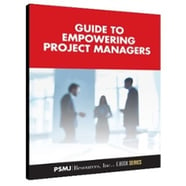 Architecture and engineering firms establish checklists for almost every aspect of project delivery. But they can be more than just technical and administrative processes. PSMJ believes checklists for project scope, detailed down to the project area type, can help you negotiate higher fees.
Architecture and engineering firms establish checklists for almost every aspect of project delivery. But they can be more than just technical and administrative processes. PSMJ believes checklists for project scope, detailed down to the project area type, can help you negotiate higher fees.
Let’s use schools as an example. Our recommended checklist would list every project area, such as:
o Classroom
o Administrative offices
o Media center
o Gymnasium (no bleachers)
o Gymnasium (with bleachers)
o Kitchen
o Cafeteria eating area
Your checklist should be far more complete than this one, including all building and site areas an owner might want included. Break a building type into the most discrete components possible. For example, divide a cafeteria into separate elements of food preparation, serving, seating, frozen food storage, fresh food storage, and bulk storage. This is because the more elements you itemize, the lower the price you show for each unit.
What level are you on?
For any school project area (e.g., classroom, admin offices), various “levels” of design services are possible—e.g., “prototype adopted,” “public,” or “private.” Your next step is to set a price for each project area, for each level:
Now when a client asks you to submit a proposal, you are ready to define the scope in terms of unit prices for the project elements—rather than for the whole project. A typical proposal would look like this:
Four selling points
This system for fee proposals offers you several advantages:
1. If the client cannot define the scope in terms of what the facility should include, then possibly some space planning or other study is needed before design begins. This approach can help you negotiate with an owner who thinks the fee should be low, when in fact his or her lack of readiness calls for additional work on your part.
2. If the scope changes during the design, you willhave a clear record of the change to assist in obtaining change orders.
3. If the client is looking to lower total fees, you can reduce the features or number of units instead of simply cutting your price.
4. You have avoided any mention of hourly rates or multipliers.
Be reasonable!
The biggest advantage of this approach is that by citing (lower) unit prices, you make your fee appear smaller; clients see each unit as priced “reasonably.” Every other business has proven that the small price-per-unit approach can result in higher sales prices.
Consider auto sales. Instead of thinking $18,000, customers only need deal with, say, $400 per month. In professional services, many lawyers quote their fees in dollars per 1/10th of an hour, making the $350 hourly rate into a rate of $35. We in the design industry can do the same.
An old-style fee proposal with a typical short scope might read, “Design a 30-classroom addition with office space and a media center,” with a single lump sum price of $49,250. But by detailing your fee at the smallest possible unit—teacher prep room, AV equipment closet, refreshment area—you can show the client lower, reasonable prices, while in the end you’ll earn what you would have charged as a single lump sum—or more.
 For additional project managment tips, download PSMJ’s Guide to Empowering Project Management, a complimentary ebook designed to synthesize some of our most insightful and action-oriented advice for project managers.
For additional project managment tips, download PSMJ’s Guide to Empowering Project Management, a complimentary ebook designed to synthesize some of our most insightful and action-oriented advice for project managers.
Also check out these project management related blog posts:
What Are The Traits Of The Best Project Managers?
10 Things Every Project Manager Must Know
Are You a Project Manager or Project Admin?



